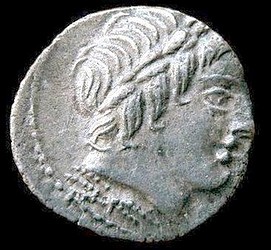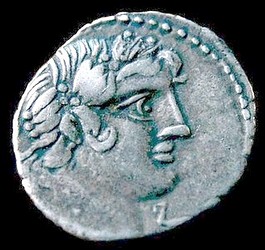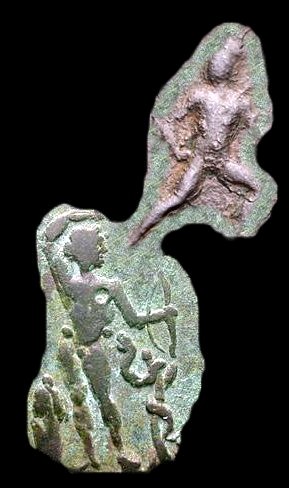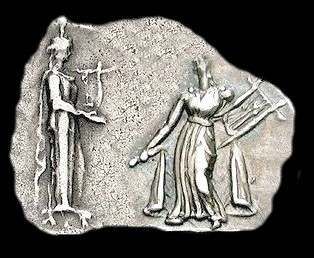  |
The cult of Apollo was established at Rome during the 5th century BC following an epidemic of plague in 431 BC. Roman public games in his honour, the Ludi Apollinares, was instituted in 212 BC. Roman coins variously depict Apollo as an attractive young man, together with his many attributes: a laurel wreath; branch; palm-tree; bay leaf; lyre or kithara; bow; arrows; tripod; plectrum; phiale; diadem; thunderbolt; and snake. |
   |
On a number of coins that pays hommage to Apollo and his festivals, coins that glorify the gens Marcia, for instance, the reverse (in allusion to the Ludi Apollinares) often shows either a racing horse or a desultor holding a whip while racing two horses. During the Augustan age Apollo's importance as a deity increased. Imperial coins often display Apollo Citharoedus as a reverse coin type: Apollo standing, wearing long drapery, holding a kithara and plectrum. This type alludes to Augustus' triumph at Actium, a victory Augustus allegedly believed he had attained with the aid of Apollo. Other common representations of Apollo on reverse coin types show him nude, holding a bow; leaning against a tree-stump, and sometimes a snake slithers around the tree. This coin type was very common on Imperial coins from Augustus until Aurelian, but fell into disuse after the reign of Julian II. |